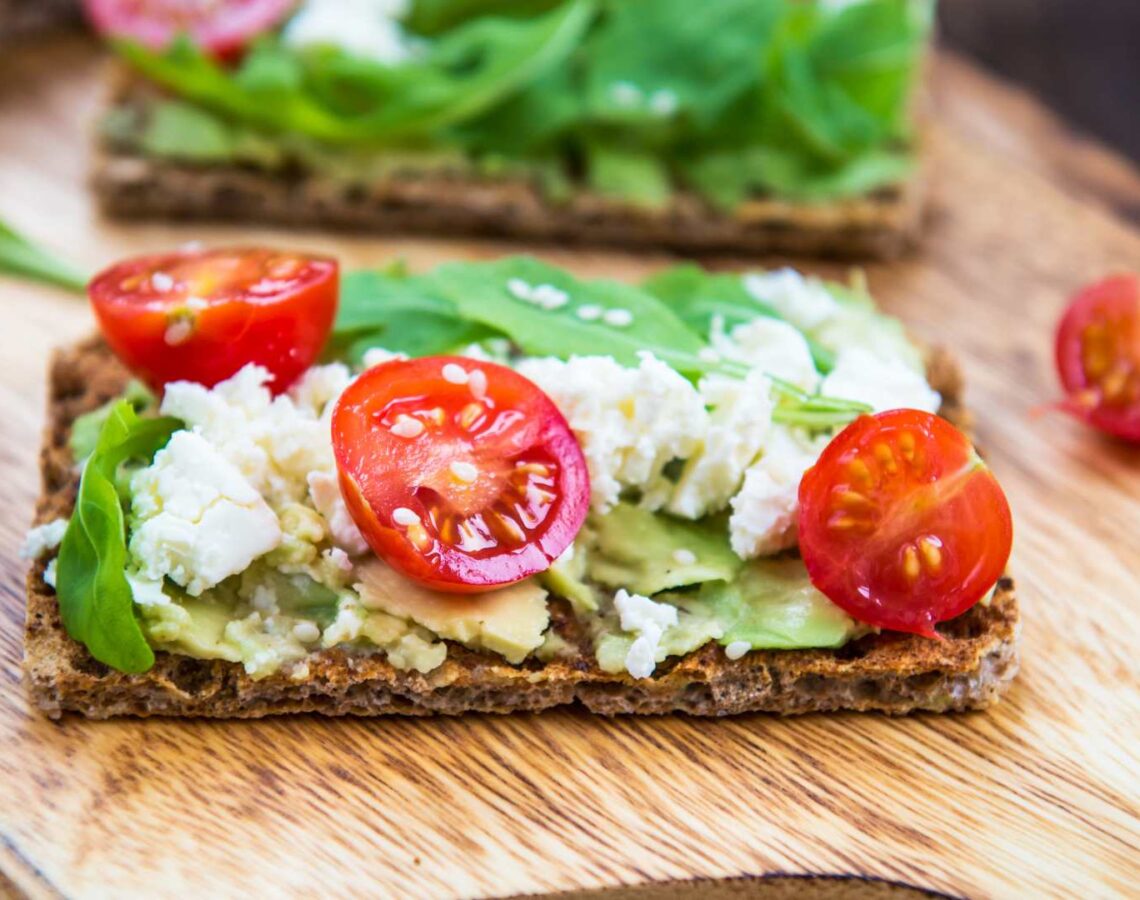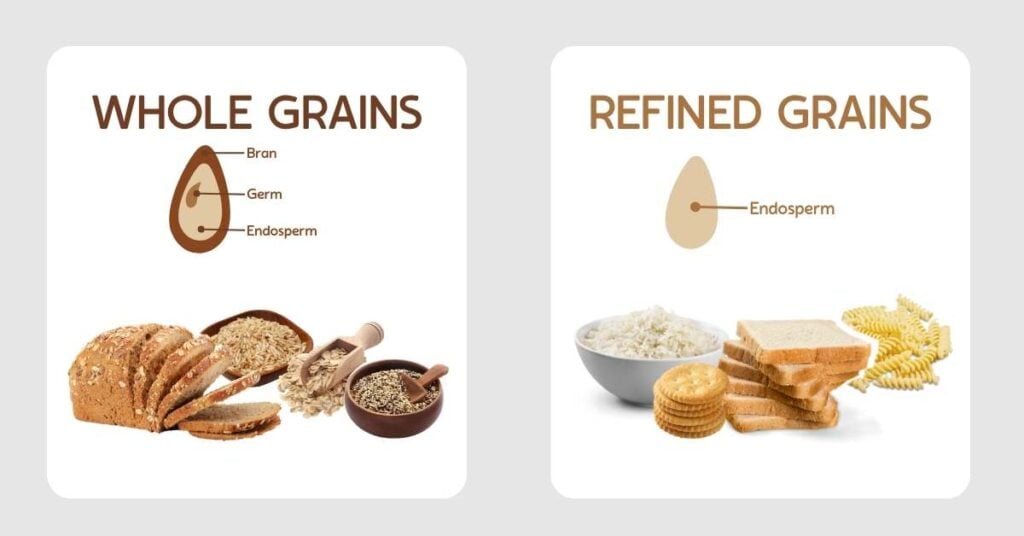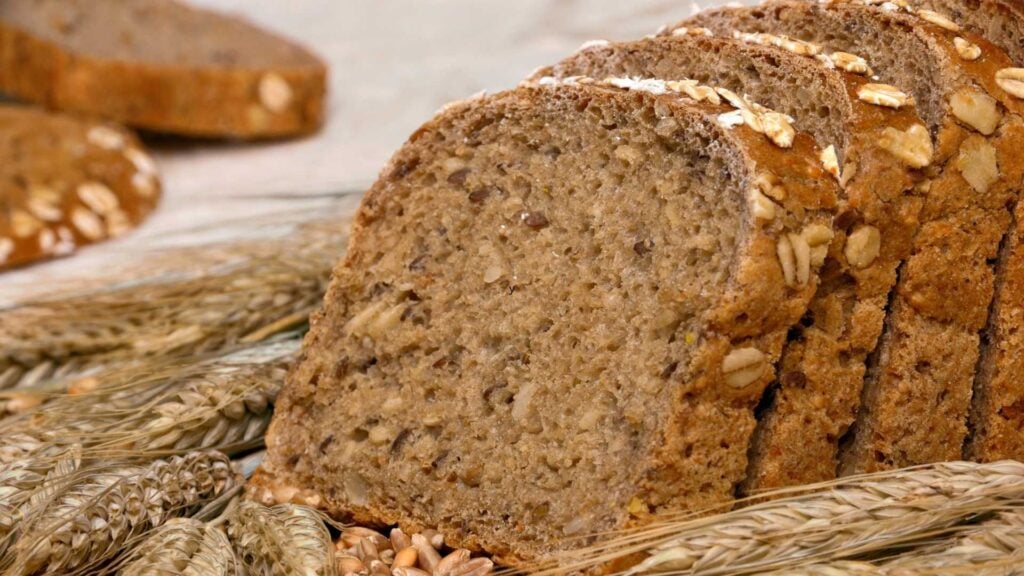Why you should be eating more wholegrains

Filled with fibre, vitamins and minerals, wholegrains are great for our overall health, yet Aussies aren’t eating enough of them! In fact, a diet low in wholegrains is the second biggest dietary risk factor for chronic disease (a diet low in legumes is the leading factor)1.
What’s so great about wholegrains?
Whole grains can boost your overall health by lowering your risk of type 2 diabetes, heart disease and stroke, as well as support good gut health. Unlike refined grains (e.g., white bread), wholegrains (such as wholemeal bread and brown rice) retain all 3 original parts of the grain. By retaining the bran, germ, and endosperm, wholegrains are higher in dietary fibre, which is the indigestible part of plant-based foods, providing bowel health benefits.
Wholegrains provide:
- Dietary fibre
- Magnesium
- Iron
- Zinc
- B group vitamins

How wholegrains can support your health
Wholegrains support your health through their high fibre content, along with other nutrients:
- Energy and essential nutrients: Grains provide carbohydrates for energy, along with a range of vitamins and minerals such as B vitamins, iron, zinc, magnesium, vitamin E, and phosphorus.
- Digestion: Wholegrain foods contain insoluble fibre that adds bulk to your stool and prevents constipation.2 Some wholegrains also have prebiotic fibres that feed beneficial gut bacteria, essential for immune function, hormone regulation, and mental wellbeing.3
- Heart health: The soluble fibre in wholegrains can help lower cholesterol levels by binding to cholesterol in the digestive system and helping to get rid of it. Wholegrains may help lower your risk of stroke and heart disease, which is the leading cause of death worldwide.4
- Reduced risk of type 2 diabetes: The dietary fibre in wholegrains can help slow the release of glucose during digestion to help with stable blood sugar levels, lowering the risk of developing type 2 diabetes.5
- Cancer prevention: Wholegrains may help reduce the risk of colorectal cancer, one of the most common types of cancer. Early detection for bowel cancer is crucial, as over 99% of cases can be successfully treated if caught in their earliest stages. Bowel cancer is rising in young people, so it’s important to get those wholegrains into your diet from an early age.6
- Maintaining a healthy weight: Wholegrains help you feel fuller for longer, reducing the likelihood of snacking or craving discretionary foods that are high in energy, but low in nutrients, such as potato chips, muffins, biscuit and other processed foods. By helping to regulate appetite, wholegrains can help maintain a healthy weight.

How can you eat more wholegrains every day?
According to the Australian Dietary Guidelines, adults are encouraged to aim for around 4-6 serves of grains and cereals per day (from mostly wholegrain sources). The Living Healthy Report 20257 indicated the average number of grain servings per person per day is only 3.6 servings, many of which are highly refined or ultra processed grains.
What does a serve of grains look like? Here are some examples:
1 slice of bread (40g)
½ medium bread roll or flat bread (40g)
1 crumpet (60g) or small English muffin (35g)
½ cup cooked rice, quinoa, noodles, barley, buckwheat polenta, or pasta (75-120g)
½ cup of cooked porridge (120g)
2/3 cup of wheat cereal flakes
¼ cup of muesli (30g)
5 tips to get more wholegrains into your day
Small changes can go a long way to eating enough wholegrains each day. Variety is key to get a mix of different fibre types (insoluble, soluble, prebiotic). Here are some practical tips:
- Start the day with wholegrains: Enjoy high-fibre breakfast cereals like muesli, porridge, overnight oats, or wholegrain toast with baked beans or an egg on top.
- Swap refined for wholegrain: Swap white bread, rice, and pasta for wholegrain versions. If you’re new to brown rice, try a 50/50 mix with white rice and build up from there.
- Snack smart: Swap white rice crackers for brown rice crackers, choose wholegrain crackers with cheese or a wholemeal crumpet with nut butter over discretionary foods such as chips and biscuits.
- Stay hydrated: Drink plenty of water, as fibre absorbs water. Staying hydrated helps the fibre work best to prevent and relieve constipation and other digestive issues.
- Explore different grains: Try wholegrain noodles, pasta, oats, popcorn, quinoa, wild rice, bulgur, buckwheat, freekeh and barley. Be adventurous and experiment with less common or Indigenous grains like triticale or sorghum.

How to get wholegrains from a gluten-free diet
For those following a gluten-free diet, you can still get the benefits of grains by choosing naturally gluten-free options like corn/maize, rice, quinoa, buckwheat, millet, amaranth, soy, and legume flours. Check for ‘gluten free’ on product packaging.
Remember to gradually increase your wholegrain intake to allow your body to adjust to the extra fibre, minimising any potential digestive discomfort, like gas or bloating.
Eating more whole grains every day is an easy way to provide essential nutrients to improve your health. Get started with a few simple swaps of your usual rice or pasta for a wholegrain version to enjoy the flavour and health benefits that wholegrains have to offer.
Acknowledgements
Content developed in conjunction with Healthylife.
Sources
- Australian Institute of Health and Welfare. (n.d.). Australian Burden of Disease Study 2018: Interactive data – risk factors. Retrieved July 3, 2025, from https://www.aihw.gov.au/reports/burden-of-disease/abds-2018-interactive-data-risk-factors/contents/dietary-risk-factors
- McRae, M. P. (2023). Dietary fiber and bowel health: A narrative review. Frontiers in Nutrition, 10. Retrieved July 3, 2025, from https://www.frontiersin.org/journals/nutrition/articles/10.3389/fnut.2023.1187165/full
- O’Neil, A. (2023). Mental wellbeing and the gut microbiome. PMC. Retrieved July 3, 2025, from https://pmc.ncbi.nlm.nih.gov/articles/PMC10384867/
- Song, S., Liu, X., Yang, S., Zhang, W., & Chen, G. (2018). Whole grain intake and the risk of stroke: A meta-analysis of prospective studies. PubMed, 29127271. Retrieved July 3, 2025, from https://pubmed.ncbi.nlm.nih.gov/29127271/
- Mirmiran, P., Bahadoran, Z., & Azizi, F. (2020). Whole-grain intake and risk of type 2 diabetes: An updated systematic review and meta-analysis of prospective cohort studies. PubMed, 32641435. Retrieved July 3, 2025, from https://pubmed.ncbi.nlm.nih.gov/32641435/
- Healthylife. (n.d.). Incidence of bowel cancer. Retrieved July 3, 2025, from https://www.healthylife.com.au/learn/gut-check-why-bowel-cancer-is-rising?srsltid=AfmBOoqNQ3-KM7724XK0bQc6jSfm_m40vr9zrihKb5l2oTcVrc-FSqNj
- Healthylife. (n.d.). Living Healthy Report 2025. Retrieved July 3, 2025, from https://www.healthylife.com.au/health-report-2025?srsltid=AfmBOor8GgWXOL-OfsdNUXfm2hOwZVfUbrek5T8KtClysd3NiedCxJCV


